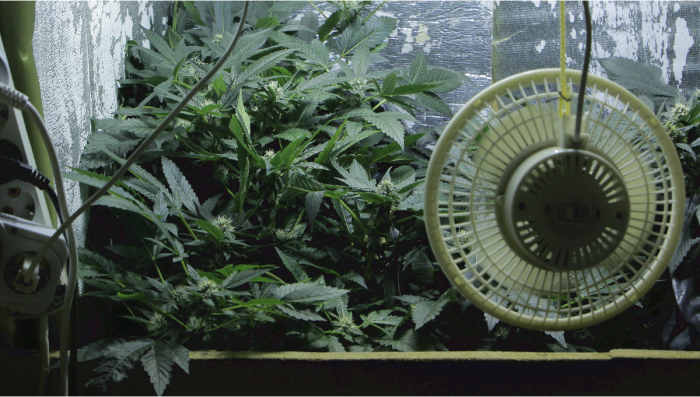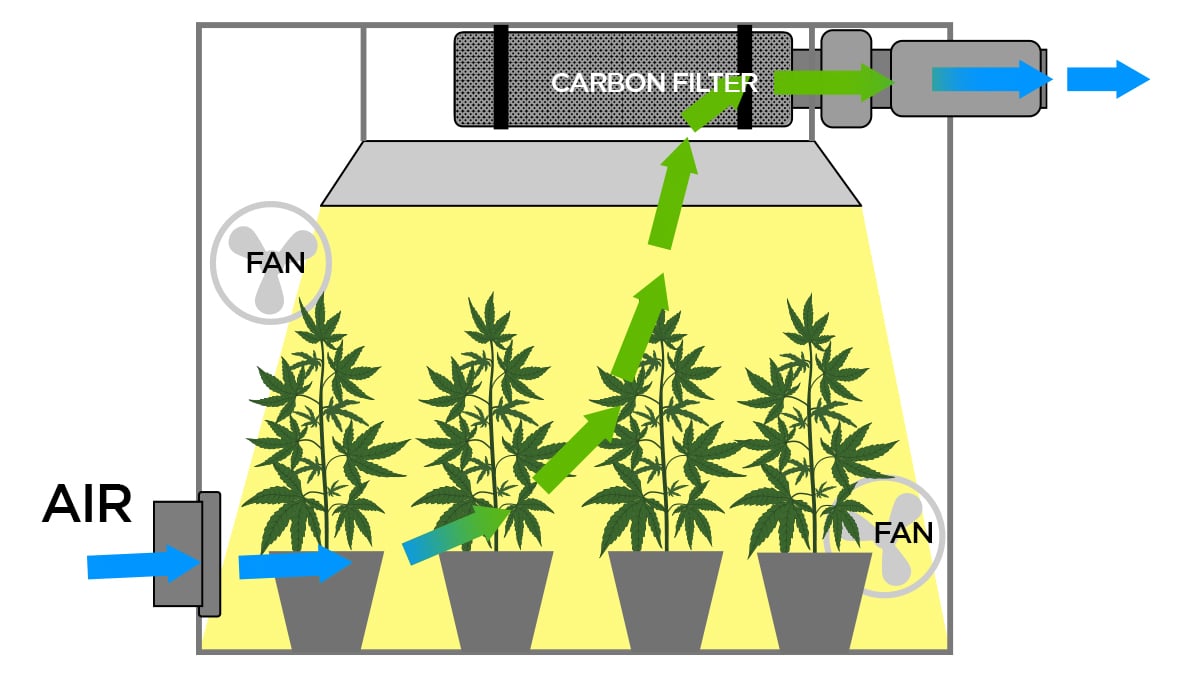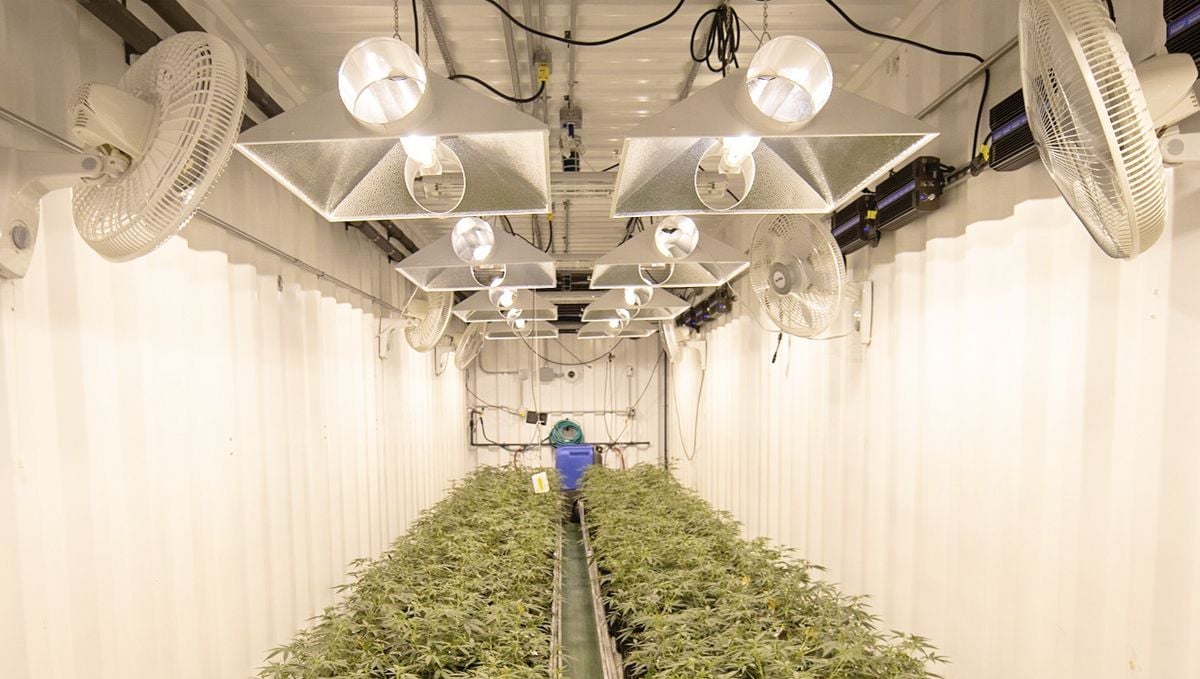Introduction What size ventilation fan do I need for a grow tent?
When it comes to growing plants in a confined space like a grow tent, proper ventilation is crucial for maintaining optimal conditions. One key component of an effective ventilation system is a ventilation fan. But how do you determine the right size of fan for your grow tent? Here are some factors to consider.
Factors to consider when choosing a ventilation fan
- Tent size: The size of your grow tent will greatly influence the size of the ventilation fan you need. A larger tent will require a more powerful fan to ensure proper air circulation. Measure the dimensions of your tent (length, width, and height) to determine the appropriate fan size.
- Heat load: The heat generated by your grow lights and other equipment can impact the ventilation requirements. More powerful lights and higher wattages will produce more heat and require a fan with greater airflow capacity to prevent overheating.
- Plant count and size: The number and size of your plants will affect the amount of air exchange needed. More plants will require increased airflow to ensure healthy growth and prevent humidity and odor buildup.
- Air exchange rate: Consider the desired air exchange rate for your particular plants. Some plants may require more frequent air changes to thrive, while others may be more tolerant of stagnant air.
- Noise level: If noise is a concern, choose a fan with a lower decibel rating. Look for fans specifically designed for quiet operation.
It’s important to carefully evaluate these factors to ensure that the ventilation fan you choose adequately meets the needs of your grow tent. Investing in the right size fan will help maintain proper air circulation, control temperature and humidity levels, and promote healthy plant growth.

Understanding Grow Tent Ventilation
The role of ventilation in maintaining optimal environmental conditions
When it comes to indoor gardening in a grow tent, ventilation plays a crucial role in maintaining the optimal environmental conditions for your plants. Proper ventilation helps to regulate temperature, humidity, and air circulation, which are vital factors for plant growth and health.
How ventilation helps control temperature, humidity, and air circulation
Temperature control: A well-ventilated grow tent helps to dissipate heat and prevent it from building up excessively. Plants require specific temperature ranges for optimal growth, and proper ventilation ensures that the temperature stays within those ranges.
Humidity regulation: Excess moisture can lead to the growth of mold and mildew, which can be detrimental to your plants. Good ventilation helps to control humidity levels by removing excess moisture and bringing in fresh air to maintain the ideal humidity range.
Air circulation: Adequate air circulation is essential for plant health as it promotes the exchange of carbon dioxide and oxygen, which are crucial for photosynthesis. Ventilation ensures that fresh air is continuously supplied, allowing plants to thrive and preventing the buildup of stale air.
Determining the right size ventilation fan for your grow tent depends on several factors, including the size of the tent, the number of plants, and the lighting and equipment used. It is recommended to choose a fan that has enough power to exchange the air volume of your grow tent once every 1-3 minutes.
By investing in the right size ventilation fan and ensuring proper air exchange, you can create an optimal growing environment for your plants and maximize their potential yield.

Calculating the Size of Ventilation Fan
Determining the volume of air in the grow tent
When choosing a ventilation fan for your grow tent, it is essential to calculate the volume of air in the tent. This will help you determine the appropriate size of fan needed for optimal air exchange.
Calculating the volume of the grow tent
To calculate the volume of the grow tent, you need to measure its length, width, and height. Multiply these measurements together to get the total volume in cubic feet. For example, if your tent measures 4 feet in length, 2 feet in width, and 6 feet in height, the total volume would be 48 cubic feet.
Determining the necessary air exchange rate
The air exchange rate refers to the number of times the air in the grow tent needs to be replaced per hour. This rate varies depending on the stage of plant growth, the number of plants, and the ambient temperature. As a general guideline, it is recommended to have an air exchange rate of 4-8 times per hour for optimal plant growth.
Choosing the right size ventilation fan based on the tent volume and air exchange rate
Once you have calculated the volume of the grow tent and determined the necessary air exchange rate, you can select a ventilation fan that matches these requirements. It is recommended to choose a fan that can provide the required air exchange rate for the volume of your tent.
Factors to consider when selecting a ventilation fan for a grow tent
In addition to tent volume and air exchange rate, there are other factors to consider when selecting a ventilation fan. These include noise level, power consumption, and additional features like adjustable speed or built-in filters.
Calculating the required air exchange rate for optimal plant growth
To calculate the required air exchange rate, divide the total volume of the grow tent by the desired number of air exchanges per hour. Using the example above with a tent volume of 48 cubic feet and a desired air exchange rate of 4 times per hour, the required air exchange rate would be 12 cubic feet per minute.
Remember, proper ventilation is crucial for maintaining the ideal environment in your grow tent and ensuring healthy plant growth. By accurately calculating the size of the ventilation fan, you can create the optimal airflow needed for successful cultivation.

Choosing the Right Ventilation Fan
Different types of ventilation fans available
When it comes to choosing a ventilation fan for your grow tent, there are several types to consider. The most common options include inline fans, centrifugal fans, and mixed flow fans. Each type has its own advantages and specific applications, so it’s important to research and choose the one that best fits your needs.
Calculating the size of the grow tent
The size of your grow tent will dictate the size and power of the ventilation fan you need. Measure the cubic feet of your grow tent by multiplying the length, width, and height. This will give you the volume of the tent, which is necessary for determining the appropriate CFM (cubic feet per minute) rating for your ventilation fan.
Understanding the ventilation requirements for different phases of plant growth
Plants have different ventilation needs at different stages of growth. During the vegetative stage, plants require less airflow compared to the flowering stage when they produce more heat and require increased air movement. Consider the growth cycle of your plants to determine the optimal ventilation requirements.
Choosing the right CFM rating for the ventilation fan
The CFM rating of a ventilation fan determines the amount of air it can move per minute. To calculate the required CFM for your grow tent, aim for at least 1 CFM per square foot of grow space. However, factors such as temperature and humidity may require higher CFM ratings for proper ventilation.
Considering additional features such as noise level and energy efficiency
While CFM rating is important, it’s also essential to consider other factors such as noise level and energy efficiency. Look for fans with adjustable speed settings to customize airflow, and choose models with lower noise levels if you’re concerned about noise pollution. Additionally, opt for energy-efficient fans to minimize power consumption.
Factors to consider when selecting a fan, including noise level and energy efficiency
When selecting a ventilation fan for your grow tent, it’s crucial to consider factors beyond CFM rating. Noise level, energy efficiency, durability, and ease of installation are all important considerations. Read reviews, compare features, and choose a fan that best meets your specific needs and requirements.

Installation and Placement of Ventilation Fan
As a grower, one of the critical factors to consider when setting up a grow tent is the ventilation system. Adequate airflow is crucial for maintaining optimal growing conditions and preventing issues like mold and excessive heat. A ventilation fan plays a vital role in ensuring proper air circulation within the grow tent. But how do you determine the right size of a ventilation fan for your specific setup?
Proper positioning of the fan for maximum air circulation
When installing a ventilation fan in your grow tent, it’s important to position it correctly to ensure maximum air circulation. Here are some tips to help you with proper fan placement:
- Exhaust fan placement: Place the exhaust fan near the top of the grow tent to effectively remove hot air and odors. This helps create a constant flow of fresh air, ensuring an ideal environment for plant growth.
- Intake fan placement: Position the intake fan at the bottom of the grow tent to draw in fresh air from the surrounding environment. This allows for better air exchange and helps regulate temperature and humidity levels.
Tips for reducing noise and maximizing airflow efficiency
To reduce noise and maximize the efficiency of your ventilation fan, consider the following tips:
- Fan size: Choose a fan size that matches the size of your grow tent. A fan that is too small may not provide sufficient airflow, while a fan that is too large may create excessive noise.
- Ducting: Use ducting to direct the airflow and minimize noise. Ensure that the ducting is properly sealed to prevent air leaks, as this can affect the overall efficiency of the ventilation system.
- Fan speed: Adjust the fan speed based on the specific needs of your plants. Higher fan speeds can help control temperature and humidity levels, but they may also increase noise levels.
By considering the proper positioning and size of your ventilation fan, as well as implementing strategies to reduce noise and maximize airflow efficiency, you can create an optimal environment for your plants to thrive in your grow tent.

Maintenance and Troubleshooting
As an experienced grower, I understand the importance of maintaining and troubleshooting ventilation fans in your grow tent. Proper maintenance ensures that the fan operates efficiently and effectively, providing optimal airflow for your plants. Here are some regular maintenance practices and common troubleshooting tips to keep your ventilation fan in good condition.
Regular maintenance practices for keeping the fan in good condition
- Clean the fan blades: Dust and debris can accumulate on the fan blades over time, reducing the fan’s performance. Regularly clean the blades using a soft brush or cloth to ensure proper airflow.
- Check the fan motor: Inspect the fan motor for any signs of wear or damage. Lubricate the motor if necessary, following the manufacturer’s instructions.
- Inspect the fan housing: Ensure that the fan housing is free from obstructions and clean. Remove any dirt or debris that may restrict airflow.
- Replace worn-out parts: If you notice any damaged or worn-out parts, such as belts or bearings, replace them promptly to avoid further issues.
Common issues with ventilation fans and how to troubleshoot them
- Loud noises: If your ventilation fan is producing excessive noise, check for loose or damaged parts. Tighten any loose screws or bolts and replace any damaged components.
- Insufficient airflow: If you notice a decrease in airflow, check for obstructions in the air ducts or filters. Clear any blockages and clean or replace the filters to restore proper airflow.
- Overheating: If your fan motor is overheating, ensure that it is adequately ventilated and not obstructed by debris. If the issue persists, consult a professional for further advice.
By following these maintenance practices and troubleshooting tips, you can ensure that your ventilation fan operates smoothly and effectively, creating an ideal environment for your plants to grow.

Conclusion
Summarizing the importance of choosing the right size ventilation fan
When it comes to setting up a grow tent, choosing the right size ventilation fan is crucial for maintaining a healthy growing environment for your plants. The size of the fan directly affects the airflow and temperature regulation in the grow tent.
To determine the size of the ventilation fan you need, consider the size of your grow tent, the number of plants you are growing, and the environmental factors such as heat and humidity. A fan that is too small may not provide sufficient airflow, resulting in stagnant air and increased risk of pests and diseases. On the other hand, a fan that is too large may lead to excessive air movement and temperature fluctuations, which can stress the plants.
Proper ventilation is essential for maintaining the optimal temperature, humidity, and air circulation in a grow tent. It helps to prevent the buildup of heat, humidity, and stale air, ensuring that your plants receive fresh oxygen and carbon dioxide for healthy growth.
Investing in the right size ventilation fan will help create the ideal growing conditions for your plants, promote even distribution of temperature and humidity, and reduce the risk of mold, mildew, and other plant issues.
Remember to consider the specific requirements of your plants and seek guidance from experienced growers or consult the manufacturer’s recommendations when choosing the right size ventilation fan for your grow tent. By ensuring proper ventilation, you can maximize the growth and yield of your plants, ultimately leading to a successful and bountiful harvest.
- Greenhouse Manual
- Domain: usbg.gov (.gov)
- Published Date: January 1, 2023
- Description: This manual, hosted on the United States Botanic Garden website, offers a comprehensive guide to greenhouse management, which can be applied to grow tents as well. It provides detailed information on various aspects of managing a controlled environment for plant growth, including tips on ventilation, pest management, and more.
- High Tunnels and Season Extension
- Domain: extension.umd.edu (.edu)
- Published Date: March 30, 2021
- Description: This resource from the University of Maryland Extension discusses high tunnels and season extension techniques that can be beneficial for grow tent setups. It offers insights into creating a controlled environment to extend the growing season, which is a principle that is central to the concept of grow tents.
- Hydroponic Growing System: Topics by Science.gov
- Domain: science.gov (.gov)
- Published Date: January 1, 1995
- Description: This page aggregates various resources and topics related to hydroponic growing systems from different governmental scientific databases. It can be a valuable resource for understanding the scientific principles behind hydroponic systems, which are often used in conjunction with grow tents for optimal results.
from HydroponicHarmony https://hydroponicharmony.com/what-size-ventilation-fan-do-i-need/
No comments:
Post a Comment